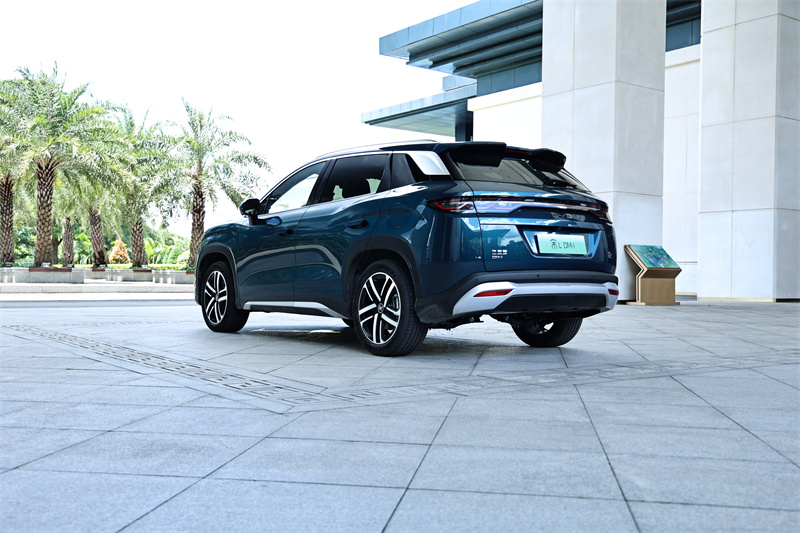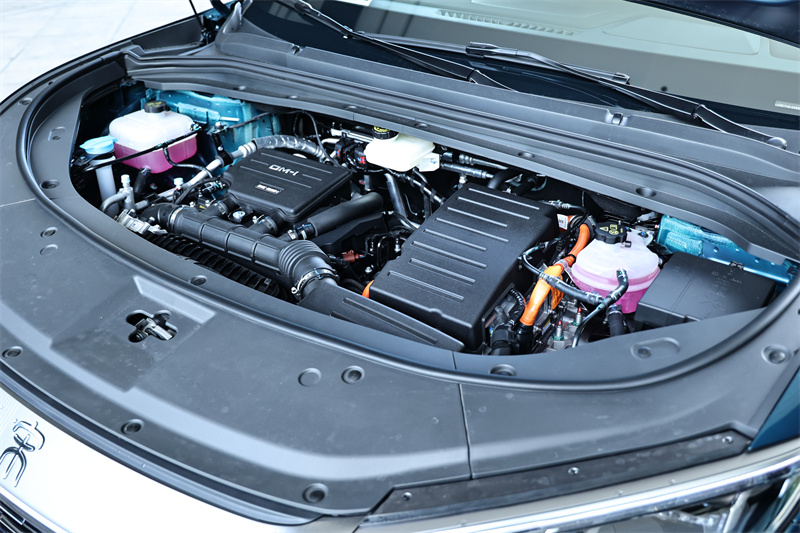The BYD Song L DM-i has a measured fuel consumption of 3.6 liters per 100 kilometers in power-loss conditions. It’s not just good-looking.
In today’s Chinese auto market, BYD’s dominance is obvious to all. It has won the global new energy vehicle sales championship for two consecutive years, with its monthly sales stably exceeding 300,000 units. This year, it may even strive to reach an annual sales volume of 4 million units.
After the Qin family and Song Pro dominated the compact car market, BYD’s Dynasty series didn’t stop its steps in further deepening and expanding its layout. Thus, the Song L DM-i, a plug-in hybrid vehicle “conquering” the medium-sized SUV market, came into being.
High Appearance Value, Continuing Classic Design
In terms of overall design, the Song L DM-i continues the classic design elements of the Song family. The front part adopts the design aesthetics of the Dragon Face in the new Chinese-style trend. If you only observe the upper part, you can clearly identify the characteristics of the Song L model, while the lower part faintly reveals the shadow of the Qin L model. Overall, the front face of the Song L DM-i presents a solemn and magnificent look.
The headlights of the Song L DM-i are designed to be slender and delicate. This design style not only enhances the vehicle’s fashion sense but also conforms to the aesthetic concept of the Song family. The bamboo-patterned panel below the headlights adds a touch of traditional charm, perfectly integrating with modern design. In addition, the matrix-style dot-matrix front grille design also brings an imposing presence to the vehicle’s front face.
The Song L DM-i is 4,780 mm long, 1,898 mm wide, 1,670 mm high, and has a wheelbase of 2,782 mm, which is the standard size for a medium-sized SUV. The body side lines of the new vehicle are designed to emphasize a sense of power. The protruding wheel arches give the vehicle a muscular and dynamic look. The 19-inch low-drag wheels not only improve the vehicle’s performance but also add a sense of fashion to the overall shape. The C-pillar retains the iconic design of the Song family while incorporating the popular floating design element, making the side visual effect more distinctive and recognizable. Such a side design is really impressive.
In terms of body rigidity, the new vehicle is developed in strict accordance with the latest C-NCAP standards, using a large amount of high-strength steel, with a proportion as high as 75.7%. The roof’s compressive strength exceeds 9.7 tons. Such a design significantly improves the vehicle’s safety. The adopted cage body structure provides passengers with a more solid safety guarantee, which is exactly what family cars pursue.
The rear of the new vehicle also shows a strong sense of power. The taillight design is inspired by the Chinese knot. When lit, it not only has high recognition but also adds a touch of traditional aesthetic charm.
Moreover, the rear also adopts a segmented rear wing similar to that of the Song L, and this design detail further enhances the vehicle’s luxury, making the entire rear look more refined and upscale.
Interior Design with a Strong Sense of Style
If BYD is an expert in symmetrical aesthetics in automotive design, then the interior of the Song L DM-i is an exquisite interpretation of this aesthetic. The center console showcases the essence of Chinese symmetrical design through various details. Whether it’s the overall layout of the front part or the arrangement of air vents and buttons, it reflects orderliness and a sense of design, demonstrating the harmony and balance of symmetrical aesthetics.
The steering wheel of the Song L DM-i has been newly designed, still dominated by symmetry and showing a strong sense of design. The layout of the multifunctional buttons on the steering wheel has been carefully planned to ensure convenient use, allowing drivers to easily control various functions.
The Song L DM-i is equipped with a 15.6-inch rotatable PAD, which is connected to the entire panel in front of the driver and front passenger seats, jointly forming a hierarchical layout of the center console. The screen on the front passenger side can display different patterns according to the changes of the interior ambient light, increasing visual interactivity. In addition, the full LCD instrument panel can be linked with the central PAD to provide more abundant and intuitive information display.
In the front row layout of the Song L DM-i, the BYD Heart crystal gear shift lever undoubtedly occupies the central position. It not only looks high-end and elegant but is also very convenient in actual use, truly achieving a perfect combination of aesthetics and practicality.
The seat design of the Song L DM-i really pays great attention to comfort. Whether it’s the filling quality of the sponge inside the seat or the support for the driver’s waist and legs, it is all done excellently. In addition, the seats are also equipped with ventilation and heating functions, ensuring that passengers can enjoy a comfortable riding experience under different climate conditions.
Equipped with DM5.0 Technology, with a Measured Power-Loss Fuel Consumption of 3.6 L/100 km
The Song L DM-i will be equipped with DM5.0 technology. The core powertrain consists of the 1.5L Xiaoyun plug-in hybrid dedicated high-efficiency engine, the EHS hybrid system, and the plug-in hybrid dedicated power-type Blade Battery. The maximum power of the engine is 74 kW, and the maximum power of the electric motor is 160 kW. There are two versions of pure electric range, 112 km and 160 km respectively, which can basically meet the needs of daily commuting in pure electric mode.
For this system, we also conducted a measured test on the power-loss fuel consumption. With the vehicle in a power-loss state with a full tank of fuel, the remaining battery power at 17%, and the air conditioner set at 24 degrees Celsius with automatic wind speed, we drove 113.8 km on a mixed road condition of urban roads and highways. Finally, we entered the gas station and added 4 liters of fuel, with the remaining battery power at 15%. After calculation, the power-loss fuel consumption in this test is 3.6 liters per 100 kilometers. This result is quite amazing for a medium-sized SUV.
The reason why it can achieve high energy efficiency lies in the DM5.0 technology it is equipped with. Although the DM5.0 is similar in structure to the previous generation, still adopting the combination of a gasoline engine, P1 and P3 motors, a single-speed DHT, and a large-capacity power battery, BYD has conducted in-depth optimization on this system.
These optimization measures have improved the working efficiency of the gasoline engine and the electric motor, and also enhanced the thermal management capability of the power system. More importantly, the charging and discharging efficiency of the power battery has been improved, especially the significant increase in charging speed, which has greatly reduced users’ waiting time during charging and improved the user experience.
The chassis architecture of the Song L DM-i is also quite impressive. It is not only equipped with FSD variable damping shock absorbers but also carries the IPB intelligent power braking system and the CTS comfortable parking function. Whether passing over speed bumps, encountering bumps on the road, or driving on mountain roads, it can maintain a good body posture. The suspension system can quickly make adjustments to cope with the impacts and bumps brought by the road surface.
In terms of handling, the Song L DM-i embodies the word “precision”. When we need to turn around on urban roads or in a parking lot, its steering wheel is particularly light to operate, and the directivity is also very accurate. When driving at high speeds, the steering wheel can increase its resistance by itself, allowing us to have a better driving experience.
In Conclusion
Such a Song L DM-i with DM5.0 technology, a brand-new design style, and a series of new features on the plug-in hybrid vehicle exclusive platform will surely make many competitors feel daunted. The measured power-loss fuel consumption of 3.6 liters per 100 kilometers is a top-level achievement for a medium-sized plug-in hybrid SUV. We have reasons to believe that the Song L DM-i will have a good sales performance.


